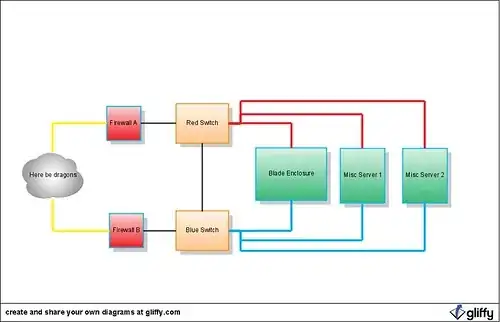Let me preface this question by saying that I am a developer and have basic knowledge of networking. My current job requires that I wear many hats.
I am building out a DataCenter for our SaaS Application and have purchased all the hardware on ebay.
2x Juniper SSG-5
2X Dell PowerConnect 5324
3X Esx Hosts
I want to be fully redundant at the hardware level. I am going to do Active/Passive on the Junipers. I understand how to set up NSRP on the firewalls. My question is, how do I connect the switches to the firewalls so that it is redundant and there is no looping?
My assumption is that each firewall will connect to both switches. Is it that simple? From there I will do NIC teaming on the ESX host, one link to each switch.
Do the switches need to be connected together? For this basic config, will I need to do any of the management on the switches?
Thanks for the help!

